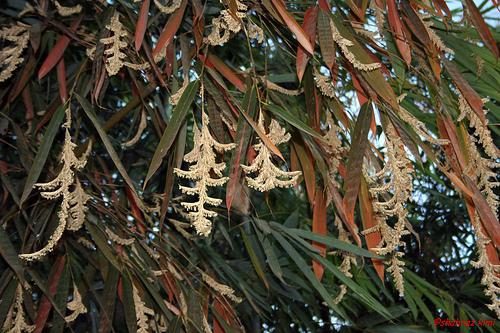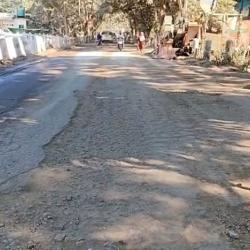“When bamboo flowers, famine, death and destruction follows”, says a tribal legend in Mizoram. Who better than the hardy Mizos would know this, considering that theirs is probably the only land on earth where history is closely intertwined with the mysterious cycle of bamboo flowering? Back in 1959, bamboo flowering in the state set off a chain of events in the rugged hilly state that ultimately led to one of the most powerful insurgencies against the Indian union spanning over two decades.
Once again the legend threatens to become a reality as thousands of rats are rampaging through rice and vegetable fields in Mizoram, adding fuel to the growing fears of famine in the region. International aid agencies have already warned of a serious crisis in this border state of the northeast.
Photo Top/right: Over 30% of Mizoram’s forest is covered by bamboo species called Melcanna baccifera, and they flower every 50 years. This flowering is followed by invasion of rats who feed on the seeds and then on to the crops and have caused famine in Mizoram in the past. This phenomenon is called MAUTAM in Mizo. Scientifically speaking the odd phenomena of bamboo flowering, is termed 'gregarious bamboo flowering' because the bamboo clumps flower all at the same time only once in the plants' lifetime. This phenomena spells disaster and causes ecological havoc. The reasons behind this strange occurrence are that bamboo plants die after flowering. And will be after some years before bamboo plants take seed again, leaving bare exposed soil – that spells disaster in mountainous states - and ultimately leading to food scarcity, as the animals depend on bamboo plants. Secondly the rats feed on the flowers and seeds of the dying bamboo tree which activates a rapid birth rate among the rodents, which leads to the huge rat population feeding on agricultural crops in the fields and granaries and causing famine.
“Countless numbers of rats have raided paddy fields and destroyed vegetables, leading to serious problems in almost all the eight districts of the state,” stated C Lalnithanga, a Mizoram government agriculture scientist and plant officer. “Hundreds of families are facing food shortages. Some are barely eking out one meal a day. Crops including rice, maize and vegetables have been wiped out as flowering of bamboo in the region caused an explosion of rodent population,” said a report by Action Aid, an international anti-poverty agency.

Mast bamboo flowering in West Khasi Hills has caused fear to the people of Riangdo area in West Khasi Hills, Meghalaya on 16-04-08. Pix by UB Photos.
A similar occurrence in Mizoram in the late 1950s led to disillusionment and anger when the authorities failed to respond with quick famine relief. This later resulted in the Mizo National Famine Front, an organization created to help people get relief, changing into the Mizo National Front, an ethnic political party which involved the Mizos in a 20-year war of attrition against India which ended only in 1987 with a peace accord. The MNF is now a regional political party that heads the government in Mizoram led by former guerrilla leader Zoramthanga.
Bamboo flowering related famine was recorded in Mizoram in the year 1862 and again in 1911 after the state witnessed similar bamboo flowerings. Incidentally the rare phenomena of bamboo flowering are a cyclical one and occur every 48 years throwing life off gear.
Bamboo grows wildly in 6,000 sq km of Mizoram’s total geographical area of 21,ooo sq km with the state, bordering Bangladesh and Myanmar, harvesting 40 percent of India’s 80 million-ton annual bamboo crops. A thriving economy revolves around bamboo. The pulp and paper industry, construction, cottage industry and handloom, food, fuel, fodder and medicine annually consume about 22 million tons of bamboo.
Though the state government has asked the Center to rush adequate stocks of food grain to curb the crisis the famine may be prevented as most villages are now linked to the main government centers, and also because the "Mizo experience" is always there to remind them of the political outcome of bamboo flowering.
- Add new comment
- 72217 reads









Comments
reasons of bamboo flowering
Pages
Add new comment